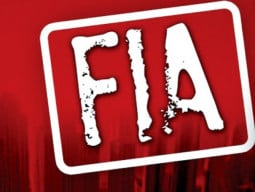
The truth is often buried behind tempting facades but fourteen parrhesiastes decided to break past facades to be revolutionary in their own way.
They chose to pour out their heart and mind to reflect truth through a discourse, which was reflected in the 29 works displayed at the Indus Valley School of Art and Architecture’s art gallery. The exhibition, titled ‘And nothing but the truth: The problem of Parrhesia’, is closing today. The works comment on topics such as gender, sexuality, poverty, cultural obligations, exploitation and religion.
According to the show’s curator, Zarmeené Shah, ‘parrhesia’ is loosely translated into English as ‘free speech’ and parrhesiastes are referred to as those who speak truly, freely and fearlessly.
Seher Naveed, one of the artists, told The Express Tribune that Zarmeené held conversations with the artists for the past six months, discussing the problems of truth-telling. “Curating a show incorporates conceptual research and focus. I participated in a dialogue with artists only when I had a particular concept in mind,” she said, adding, “Hanging the pieces is really the last part of it but even this is important. I think of how each piece has a dialogue with the one I place next to it.”
With this show, she divided the gallery into two halves, one displaying the work of artists who tackled socio-political truths in their works, while the other half of the work were deconstructive notions of truth and the ambiguity of it.
Three untitled pear-shaped hangings, made with metal, wood and acrylics, dangled in thin air. Perhaps the artwork was left untitled because the late artist, Ussman Ghauri, was not able to name them before he passed away. He died a week after the exhibition started and was working on pieces specifically for the show. A face was shown, encaged behind metallic bars. It was one of Ghauri’s three works on display, titled ‘And Agony, But the Truth’.
‘From the beginning of time, each revelation to Humanity from the Divine spoke of Truth. Our literature reads and teaches that the bravest of all is the one who speaks the truth in the face of extreme danger,’ read Ghauri’s artist statement.
“Ussman became a part of this conversation with me some months ago but when we were supposed to have the conversation with a larger audience, Ussman is silent,” said Zarmeené.
A black and white striped bear made of fibre glass, wood and acrylic, stood 42 inches tall, gripping the Eiffel tower in hand. For the artist, Aamir Habib, the bear represented Pakistani leaders, politicians or the elite, who are the looters - ‘taking anything they can get their hands on’. According to Habib’s artist statement, this work directly addresses a subject that has generated much drawing room and chai khana discussion - the mockery of Pakistan’s sovereignty at the hands of its rulers while the men of law turn a blind eye. Seher Naveed was also interested in conversations that take place in “drawing rooms, on the internet, at dhabas”. She used the telephone wires in her piece, ‘Bouncing Conversation’ to represent the conversations and often the urban stories behind them. “I tried to capture the visual aspect of how you envision your memory,” she said. She used transparent plastic and a blue marker to create her masterpiece in two weeks. “Initially, I wanted to use transparent materials so when it was displayed, the light would play with the piece to reflect blue shadows and movement,” she explained. Unfortunately, she could not display the work in the manner she envisioned due to technical difficulties, but she decided to display it nonetheless, since she made it specifically for the show.
Zarmeené officially invited all of the artists - Ammad Tahir, Munawar Ali, Mariam Agha, Noor Yousof, Naiza Khan, Mohammed Ali, Imran Qureshi, Murad Khan Mumtaz, Haider Ali Jan, Abdullah M I Syed and Shahale Jamil - three months ago.
Published in The Express Tribune, May 10th, 2011.

















COMMENTS (3)
Comments are moderated and generally will be posted if they are on-topic and not abusive.
For more information, please see our Comments FAQ